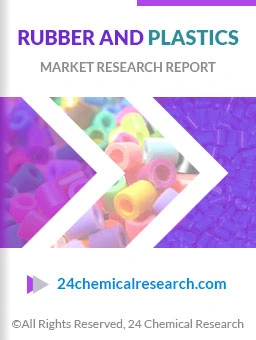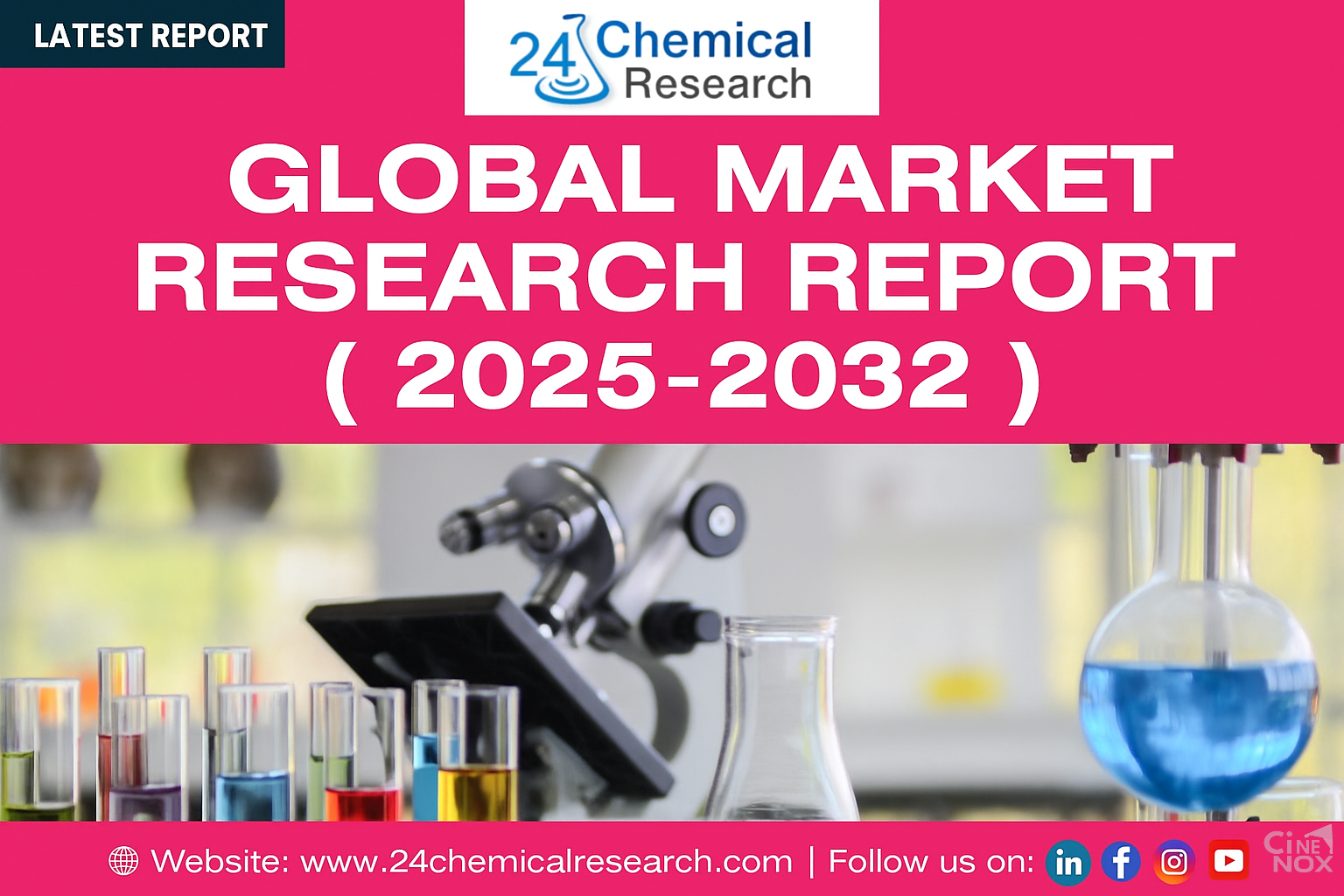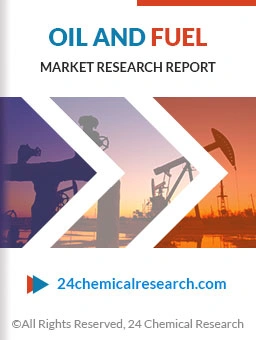Advancements in Healthcare Propel Ceramic-Polymer Composites for Biomedical Market Growth at 6.8 Percent CAGR
Global Ceramic-Polymer Composites for Biomedical Market continues to see significant advancements, driven by increasing demand for biocompatible and high-performance materials in medical applications. While the market is still evolving, the unique properties of these composites - combining ceramic's durability with polymer's flexibility - are creating new possibilities across tissue engineering, dental implants, and orthopedic applications.
Market Overview & Regional Analysis
North America currently leads in ceramic-polymer composite adoption, thanks to well-established healthcare infrastructure and significant R&D investments. The region benefits from strong academic-industry collaborations focused on developing next-generation biomaterials. However, Europe maintains stringent regulatory frameworks that continue to push innovation in material safety and efficacy standards.
Asia-Pacific is emerging as the fastest-growing region, with countries like China and India investing heavily in domestic medical device manufacturing. While technological capabilities vary across the region, government initiatives supporting local production are accelerating market growth. Latin America and Middle East markets show promising potential, though infrastructure challenges and regulatory harmonization remain key hurdles.
Download FREE Sample Report: https://www.24chemicalresearch.com/download-sample/270227/global-ceramicpolymer-composites-for-biomedical-forecast-market-2024-2030-251
Key Market Drivers and Opportunities
The market is primarily driven by an aging global population requiring more orthopedic and dental interventions. Rising chronic disease prevalence and increasing trauma cases further fuel demand for biocompatible implant materials. Technological advancements in 3D printing of ceramic-polymer composites have opened new avenues for customized medical solutions, particularly in dental and craniofacial applications.
Significant opportunities exist in developing resorbable composites for temporary implants and drug-eluting systems that combine structural support with therapeutic delivery. The growing focus on value-based healthcare is pushing manufacturers to develop cost-effective solutions without compromising performance, creating potential in emerging economies.
Challenges & Restraints
High development and certification costs present significant barriers to entry, particularly for small manufacturers. Complex regulatory pathways across different regions can delay product commercialization, while reimbursement challenges for innovative solutions persist in many healthcare systems.
Material limitations, including potential wear debris and long-term stability concerns, continue to drive intensive R&D efforts. The industry also faces challenges in scaling up production while maintaining the precise material properties required for medical applications.
Download FREE Sample Report: https://www.24chemicalresearch.com/download-sample/270227/global-ceramicpolymer-composites-for-biomedical-forecast-market-2024-2030-251
Market Segmentation by Type:
Bioglass
Titania
Zirconia
Alumina
Hydroxyapatite (HA)
Market Segmentation by Application:
Tissue Engineering
Dental Implants
Orthopedic Implants
Drug Delivery
Others
Market Segmentation and Key Players
Foster
TA Instruments
Metoxit
Zimmer Biomet
Stryker Corporation
Invibio Biomaterial Solutions
CeramTec GmbH
DSM
CAM Bioceramics BV
Morgan Advanced Materials
Berkeley Advanced Biomaterials
CoorsTek Medical
Get Full Report Here: https://www.24chemicalresearch.com/reports/270227/global-ceramicpolymer-composites-for-biomedical-forecast-market-2024-2030-251
Follow us on LinkedIn: https://www.linkedin.com/company/24chemicalresearch
Global Ceramic-Polymer Composites for Biomedical Market continues to see significant advancements, driven by increasing demand for biocompatible and high-performance materials in medical applications. While the market is still evolving, the unique properties of these composites - combining ceramic's durability with polymer's flexibility - are creating new possibilities across tissue engineering, dental implants, and orthopedic applications.
Market Overview & Regional Analysis
North America currently leads in ceramic-polymer composite adoption, thanks to well-established healthcare infrastructure and significant R&D investments. The region benefits from strong academic-industry collaborations focused on developing next-generation biomaterials. However, Europe maintains stringent regulatory frameworks that continue to push innovation in material safety and efficacy standards.
Asia-Pacific is emerging as the fastest-growing region, with countries like China and India investing heavily in domestic medical device manufacturing. While technological capabilities vary across the region, government initiatives supporting local production are accelerating market growth. Latin America and Middle East markets show promising potential, though infrastructure challenges and regulatory harmonization remain key hurdles.
Download FREE Sample Report: https://www.24chemicalresearch.com/download-sample/270227/global-ceramicpolymer-composites-for-biomedical-forecast-market-2024-2030-251
Key Market Drivers and Opportunities
The market is primarily driven by an aging global population requiring more orthopedic and dental interventions. Rising chronic disease prevalence and increasing trauma cases further fuel demand for biocompatible implant materials. Technological advancements in 3D printing of ceramic-polymer composites have opened new avenues for customized medical solutions, particularly in dental and craniofacial applications.
Significant opportunities exist in developing resorbable composites for temporary implants and drug-eluting systems that combine structural support with therapeutic delivery. The growing focus on value-based healthcare is pushing manufacturers to develop cost-effective solutions without compromising performance, creating potential in emerging economies.
Challenges & Restraints
High development and certification costs present significant barriers to entry, particularly for small manufacturers. Complex regulatory pathways across different regions can delay product commercialization, while reimbursement challenges for innovative solutions persist in many healthcare systems.
Material limitations, including potential wear debris and long-term stability concerns, continue to drive intensive R&D efforts. The industry also faces challenges in scaling up production while maintaining the precise material properties required for medical applications.
Download FREE Sample Report: https://www.24chemicalresearch.com/download-sample/270227/global-ceramicpolymer-composites-for-biomedical-forecast-market-2024-2030-251
Market Segmentation by Type:
Bioglass
Titania
Zirconia
Alumina
Hydroxyapatite (HA)
Market Segmentation by Application:
Tissue Engineering
Dental Implants
Orthopedic Implants
Drug Delivery
Others
Market Segmentation and Key Players
Foster
TA Instruments
Metoxit
Zimmer Biomet
Stryker Corporation
Invibio Biomaterial Solutions
CeramTec GmbH
DSM
CAM Bioceramics BV
Morgan Advanced Materials
Berkeley Advanced Biomaterials
CoorsTek Medical
Get Full Report Here: https://www.24chemicalresearch.com/reports/270227/global-ceramicpolymer-composites-for-biomedical-forecast-market-2024-2030-251
Follow us on LinkedIn: https://www.linkedin.com/company/24chemicalresearch
Advancements in Healthcare Propel Ceramic-Polymer Composites for Biomedical Market Growth at 6.8 Percent CAGR
Global Ceramic-Polymer Composites for Biomedical Market continues to see significant advancements, driven by increasing demand for biocompatible and high-performance materials in medical applications. While the market is still evolving, the unique properties of these composites - combining ceramic's durability with polymer's flexibility - are creating new possibilities across tissue engineering, dental implants, and orthopedic applications.
Market Overview & Regional Analysis
North America currently leads in ceramic-polymer composite adoption, thanks to well-established healthcare infrastructure and significant R&D investments. The region benefits from strong academic-industry collaborations focused on developing next-generation biomaterials. However, Europe maintains stringent regulatory frameworks that continue to push innovation in material safety and efficacy standards.
Asia-Pacific is emerging as the fastest-growing region, with countries like China and India investing heavily in domestic medical device manufacturing. While technological capabilities vary across the region, government initiatives supporting local production are accelerating market growth. Latin America and Middle East markets show promising potential, though infrastructure challenges and regulatory harmonization remain key hurdles.
Download FREE Sample Report: https://www.24chemicalresearch.com/download-sample/270227/global-ceramicpolymer-composites-for-biomedical-forecast-market-2024-2030-251
Key Market Drivers and Opportunities
The market is primarily driven by an aging global population requiring more orthopedic and dental interventions. Rising chronic disease prevalence and increasing trauma cases further fuel demand for biocompatible implant materials. Technological advancements in 3D printing of ceramic-polymer composites have opened new avenues for customized medical solutions, particularly in dental and craniofacial applications.
Significant opportunities exist in developing resorbable composites for temporary implants and drug-eluting systems that combine structural support with therapeutic delivery. The growing focus on value-based healthcare is pushing manufacturers to develop cost-effective solutions without compromising performance, creating potential in emerging economies.
Challenges & Restraints
High development and certification costs present significant barriers to entry, particularly for small manufacturers. Complex regulatory pathways across different regions can delay product commercialization, while reimbursement challenges for innovative solutions persist in many healthcare systems.
Material limitations, including potential wear debris and long-term stability concerns, continue to drive intensive R&D efforts. The industry also faces challenges in scaling up production while maintaining the precise material properties required for medical applications.
Download FREE Sample Report: https://www.24chemicalresearch.com/download-sample/270227/global-ceramicpolymer-composites-for-biomedical-forecast-market-2024-2030-251
Market Segmentation by Type:
Bioglass
Titania
Zirconia
Alumina
Hydroxyapatite (HA)
Market Segmentation by Application:
Tissue Engineering
Dental Implants
Orthopedic Implants
Drug Delivery
Others
Market Segmentation and Key Players
Foster
TA Instruments
Metoxit
Zimmer Biomet
Stryker Corporation
Invibio Biomaterial Solutions
CeramTec GmbH
DSM
CAM Bioceramics BV
Morgan Advanced Materials
Berkeley Advanced Biomaterials
CoorsTek Medical
Get Full Report Here: https://www.24chemicalresearch.com/reports/270227/global-ceramicpolymer-composites-for-biomedical-forecast-market-2024-2030-251
Follow us on LinkedIn: https://www.linkedin.com/company/24chemicalresearch
0 Comments
0 Shares
91 Views
0 Reviews







